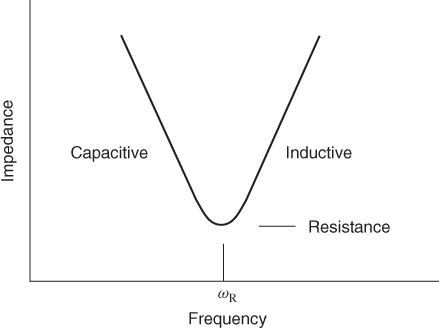4.8 The Board Decoupling Problem
A printed circuit board design usually includes a group of decoupling capacitors. These capacitors are connected across the power supply leads near active devices that drive transmission lines. They are usually parallel connected to ground/power planes using vias. It is often assumed that the planar capacitance supplies the first energy when there is a step demand. Because of the typical via geometry, this assumption may not be true.
Designers often consider each decoupling capacitor used on a circuit board as having a series inductance. In this analysis, all transmission line effects are ignored. Capacitors are staggered in value so that the natural frequencies associated with these series resonant circuits are spread out over the spectrum of interest.
In a circuit sense, capacitors are characterized by their natural frequencies. At this frequency, a capacitor resonates with its series self-inductance or ESL. At this resonant frequency, a capacitor looks like a resistance, which is called the ESR. Above this frequency, a capacitor looks like an inductor. The impedance of a capacitor including these parasitic is shown in Figure 4.4.
Figure 4.4 The impedance of a capacitor near its resonant frequency.

The resonant frequency of a capacitor depends on its construction style and capacitance. In general, a larger capacitor value implies a lower natural ...
Get Digital Circuit Boards: Mach 1 GHz now with the O’Reilly learning platform.
O’Reilly members experience books, live events, courses curated by job role, and more from O’Reilly and nearly 200 top publishers.

